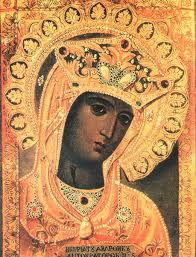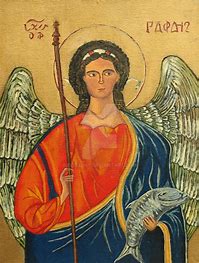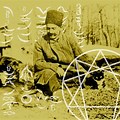Kabbalah, the religion beloved by celebrities in the noughties








Kabbalah, the religion beloved by celebrities in the noughties
In the early 2000s, it was rare to see celebrities like Madonna, Ashton Kutcher and Lindsay Lohan without a piece of red string tied around their wrists. The bracelet signalled that they followed the mystical religion known as Kabbalah.
The religion appeared to reach its cultural peak during the first decade of the 21st century, which is when Rebekah Neumann, WeWork’s former chief brand and impact officer and wife of WeWork co-founder, Adam Neumann, joined.
In WeCrashed, the new Apple TV+ series which depicts the rise and fall of the co-working giant, you can see Rebekah (played by Anne Hathaway) wearing the thin red string around her wrist while guiding a meditation class.
Rebekah and Adam met in 2007, when she was still Rebekah Paltrow (she is the first cousin to Gwyneth), and she quickly introduced Adam to the religion.
And while the Neumanns incorporated their Kabbalah beliefs into the WeWork empire, over the ensuing decade, many other celebrities fell out of love with the religion.
Provided by The Independent Adam Neumann in 2016 (left) and Rebekah Neumann in 2010 (right) both wear Kabbalah’s red string on their left wrists (Getty)
What is Kabbalah?
Kabbalah has long been associated with Judaism. The word itself comes from the Hebrew word meaning “received knowledge” or “tradition”.
Kabbalah followers, or Kabbalists, say their beliefs date back to the origins of the Torah and they have been an accepted part of Judaism since the 12th century.
Kabbalist’s beliefs have been described as “mystical” as the practice focuses on direct communication with God through solitary study.
According to the Kabbalah Centre’s website, Kabbalah is “an ancient wisdom that provides practical tools for creating joy and lasting fulfilment. It’s an incredible system of technology that will completely change the way you look at your world”.
When did Kabbalah become popular?
The practice became popular in the US in the sixties when a rabbi, Philip Berg, began studying the religion during a trip to Israel in 1962.
Berg subsequently opened the Kabbalah Centre, which saw Kabbalah in the US focus more on personal improvement and spiritual happiness. He ran meditation classes and launched a Kabbalah 101 self-study class.
The way Berg ran his Kabbalah centres meant it was more easily digestible, as it didn’t require people to learn Hebrew in order to practice the religion. Instead, he published his interpretations of ancient Kabbalah texts.
However, Berg’s teachings had many critics. Rick Alan Ross, executive director of the Cult Education Institute, told Broadly that most of the Kabbalah Centre’s teachings have “no basis” in Jewish text.
He added: “Berg’s teachings represent his own idiosyncratic combination of beliefs. For example, that scanning the pages of the Zohar, even when you cannot read Hebrew, somehow will imbue you with supernatural power.”
Which celebrities followed Kabbalah?
As well as Madonna, other celebrities that have followed Kabbalah include Ashton Kutcher and ex-wife Demi Moore, Lindsay Lohan, Monica Lewinsky, Ariana Grande, James Van Der Beek and Donald Trump’s ex-wife Marla Maples.
Other celebrities who have been associated with the religion include Britney Spears, Mick Jagger, Naomi Campbell, Mary-Kate Olsen, Paris Hilton and Elizabeth Taylor.
Provided by The Independent Guy Ritchie and Madonna in 2008 (left) and Adam Kutcher and Demi Moore in 2007 (right). Both Madonna and Moore wear red string on their left wrist (Getty)
In 2014, Grande told the Telegraph that she turned to Kabbalah after her brother was “rejected by the Catholic church” for being gay.
“When my brother was told that God didn’t love him I was like, ‘OK, that’s not cool.’ They were building a Kabbalah centre in Florida so we both checked it out and really had a connection with it,” the singer said at the time.
“Since then, my life has unfolded in a really beautiful way, and I think that it has a lot to do with the tools I’ve learned through Kabbalah, I really do.”
In 2003, Madonna spent £3.5 million on a London townhouse she intended to turn into a Kabbalah centre.
“I think Kabbalah is very punk rock,” she said at the time. “It teaches you that you are responsible for everything. We don’t realise there is a bigger system at work. Everything that comes to you is for a reason – and I think that’s pretty revolutionary.”
When Berg died in 2013, the singer sent an email to The New York Times which read: “I learned more from him than any human I have ever met.”
She added: ‘“This one concept that he taught me, and that Kabbalah teaches, is that you have to take responsibility for your life. You can’t blame other people for what happens. You are in charge of your destiny.”
Kutcher and then-girlfriend Mila Kunis were also present at the funeral. It’s not known which celebrities, if any, still follow Kabbalah or attend the Kabbalah Centre.
What does the red string Kabbalah bracelet mean?
The red string worn around the wrist is the most recognisable sign of the Kabbalah movement.
It’s often worn on the left wrist and is said to ward off any “evil and misfortune” that could be “caused by the evil eye”.
What scandals was the Kabbalah Centre involved in?
Model Jerry Hall revealed in a 2005 interview with Index magazine that Kabbalah Centre followers who went through the “Door of Miracles” were expected to hand over 10 per cent of their income.
She said: “We had a fantastic time with the Kabbalah Centre for about a year. They give very practical advice on day-to-day stuff, like how to be a better parent. But we couldn’t go through the Door of Miracles unless we gave the Kabbalah people ten percent of our money, so we couldn’t study it any more.”
Money was one of the reasons why Madonna seemingly cut ties with the Centre too. According to a NewsWeek investigation in 2011, Madonna and Berg’s son Michael raised $18 million (£13.6 million) through their joint Raising Malawi Foundation.
They had planned to build a girls’ school in Malawai but the project folded after $3 million (£2.2 million) was spent at the LA Kabbalah Centre instead. This led to Madonna taking oversight of the foundation.
The Centre also saw a former student successfully sue Yehuda Berg, Philip Berg’s son.
The student alleged that Yehuda had tried to drug and sexually assuault her. Yehuda and and Kabbalah Centre were ordered to pay $177,500 (£134,450) in damages in 2015.
At the time, a Kabbalah Centre spokesperson told Broadly: “Yehuda has not been involved with the Kabbalah Centre since he resigned in 2012. When Yehuda left the Centre, he made clear that he was doing so because his departure was in the best interests of the Centre and in the best interest of his own personal effort to change his life.”
What is Rebekah Neumann’s history with Kabbalah and how was it introduced at WeWork?
It’s unsure when Rebekah Neumann began taking classes at the Kabbalah Centre in Los Angeles, but it’s thought to be when she moved out there to try and make it as an actor in the early 2000s.
It was Rebekah who introduced Adam to the school of thought, and it was at the Kabbalah Centre where Adam met Kutcher, an early investor of WeWork.
A close friend of Rebekah’s told Bustle in a 2020 profile: “There’s this saying in Kabbalah that the woman is the CEO of the relationship, and she was 100 per cent the CEO of the relationship.”
As chief brand and impact officer, Rebekah funnelled the religion into the WeWork offices too. The Bustle report says Adam “expected deputies to show up for Kabbalah meditation classes”.
A separate report from the Wall Street Journal claimed that Adam would bring teachers from the Kabbalah Centre to company offices and retreats to teach executives. Adam was also thought to have formed WeWork’s company values from what he learned through the religion.
In a 2013 interview with The Real Deal, Adam said: “I noticed that in the Kabbalah community, people were really helping each other. I wanted to translate that into business.”
A spokesperson for Adam later denied that Kabbalah had influenced WeWork’s philosophy, mission or business decisions.
Reference: Independent:
What did St Patrick do? How the saint drove snakes from Ireland, where he was from and what he’s the patron of











What did St Patrick do? How the saint drove snakes from Ireland, where he was from and what he’s the patron of
Marked every year on 17 March, it is an occasion to mark Ireland’s patron saint with shamrocks, parades and copious amounts of Guinness.
St Patrick is famous for driving snakes from Ireland, but what else did he do to achieve such prominence? Here’s everything you need to know.
Where was St Patrick from?
Born at the end of the fourth century in Roman Britain, he was the grandson of a priest – though was not particularly devout as a boy.
His life changed at the age of sixteen when he was kidnapped by raiders and taken to Ireland as a slave.
The saint spent six years working as a shepherd and praying, developing a deeper relationship with God, until one day he was said have heard a voice.
“Look – your ship is ready,” it said, according to the account of the saint himself in his “Confession”, which tells his early life story.
Fleeing his master, he found a ship to take him back to Britain, where he returned to his family and continued to study Christianity there and in France.
Then came a vision in which a horde of Irish appeared to him and said: “We appeal to you, holy servant boy, to come and walk among us.”
What did St Patrick do in Ireland?
He headed to Ireland again, this time as a missionary. His arrival is dated to 432 AD, and marks a major moment in Irish history. He set about converting the previously pagan, druidic island to Christianity with remarkable success.
Soon after, a monastic system on the continental model popped up in Ireland, and the country became literate, writing in Latin and then in Irish using the Latin alphabet.
Ireland can claim the longest unbroken written record in Europe, stretching through the Dark Ages.
Folk stories say Patrick founded 300 churches and converted 100,000 people.
He’s generally associated with the northern half of the island, and specifically Armagh – where the most senior Catholic and Anglican bishops are based – and Downpatrick, where he is said to be buried.
How did St Patrick drive the snakes from Ireland?
The main miracle associated with St Patrick, and taught to all schoolchildren, is driving the snakes out of Ireland.
Attacked by some serpents while undergoing a 40-day fast on a hill, he drove his staff into the ground and sent them (and all other snakes in the country) into the sea.
As a result, unsurprisingly, he’s often invoked against snakes. There are no native snakes in Ireland to this day, but that could be to do with the climate and the vagaries of the Ice Age thaw.
What is St Patrick the patron saint of?
St Patrick is the patron saint of Nigeria, Puerto Rico, Boston, engineers and – most commonly in the public consciousness – Ireland, and he is commemorated across the world.
His life has been been celebrated since the 1700s in parts of the United States, which has long drawn emigrants from Ireland.
New York’s parade is the biggest on earth, with two million people lining midtown Manhattan to watch on.
In Ireland, every town usually has a parade, and the main parade in Dublin is televised live, with a million people taking part in long-weekend festivities.
Malta has a long tradition of celebrating, initiated by a regiment of Royal Dublin Fusiliers in the early 20th century, while Argentina’s unofficial parade attracts 20,000 revellers to a neighbourhood with several Irish bars in Buenos Aires.
The furthest celebrations afield, however, took place in 2011, when Irish-American astronaut Catherine Molloy played a 100-year-old Irish flute aboard the International Space Station to mark the day.
Reference: Karl McDonald
Pope, in toughest comments yet, calls Ukraine invasion 'armed aggression'









Pope, in toughest comments yet, calls Ukraine invasion 'armed aggression'
Reuters/VATICAN MEDIA Pope attends mass on the 400th anniversary of the Canonisation of St Ignatius of Loyola, in Rome
VATICAN CITY (Reuters) - A sombre Pope Francis on Sunday issued his toughest condemnation yet of the invasion of Ukraine, saying the "unacceptable armed aggression" and "massacre" must stop.
The pope has not used the word "Russia" in his condemnations of the war since President Vladimir Putin ordered the invasion on Feb. 24. But the pontiff's choice of words appear increasingly aimed at rejecting Moscow's justifications for the invasion.
"Faced with the barbarity of killing of children, of innocents and unarmed civilians, no strategic reasons can hold up," he told 25,000 people in St. Peter's Square during his Sunday blessing.
Moscow says its action is designed not to occupy territory but to demilitarise and "de-Nazify" its neighbour. It has also denied targeting civilian areas.
"The only thing to do is stop this unacceptable armed aggression before it reduces cities into cemeteries," Francis said.
"In the name of God I ask you: stop this massacre!" Francis said, before asking the crowd to join him in silent prayer for an end to the war.
He called Ukraine's besieged port of Mariupol a "martyred city" and again appealed for "truly secure humanitarian corridors" to allow residents to evacuate.
Russia bombed a maternity hospital in Mariupol on Wednesday. Ukraine said pregnant women were among those hurt; Russia said the hospital was no longer functioning and had been occupied by Ukrainian fighters.
Francis seemed particularly sombre. After an unusually brief greeting to groups in the square, he left the window on the top floor of the Apostolic Palace and returned to the papal library.
Russia calls its action a "special military operation". Last Sunday Francis implicitly rejected that term, saying it could not be considered "just a military operation" but a war that had unleashed "rivers of blood and tears".
On Sunday Francis also urged people to take in refugees from Ukraine and thanked those who had joined a "great network of solidarity" to help those fleeing war.
The fighting in Ukraine has created more than 2.5 million refugees, with most taken in by Poland.
Reference: Reuters: By Philip Pullella
Local churches shun Vatican's moderate stance on Russia










Local churches shun Vatican's moderate stance on Russia
ROME (AP) — The head of the Polish bishops’ conference has done what Pope Francis has so far avoided doing: He publicly condemned Russia’s invasion of Ukraine and urged the head of the Russian Orthodox Church to use his influence with Vladimir Putin to demand an end to the war and for Russian soldiers to stand down.
Provided by Associated Press Russia Ukraine War Vatican
“The time will come to settle these crimes, including before the international courts," Archbishop Stanislaw Gądecki warned in his March 2 letter to Patriarch Kirill. “However, even if someone manages to avoid this human justice, there is a tribunal that cannot be avoided.”
Gądecki’s tone was significant because it contrasted sharply with the comparative neutrality of the Vatican and Francis to date. The Holy See has called for peace, humanitarian corridors, a cease-fire and a return to negotiations, and even offered itself as a mediator. But Francis has yet to publicly condemn Russia by name for its invasion or publicly appeal to Kirill, and the Vatican offered no comment on the Russian strike on Europe’s largest nuclear plant that sparked a fire Friday.
For a pope who has declared the mere possession of nuclear weapons immoral and cautioned against using atomic energy because of the environmental threat posed by radiation leaks, the silence was even more notable.
The Vatican has a tradition of quiet diplomacy, believing that it can facilitate dialogue better if it doesn’t take sides or publicly call out aggressors. It has long used that argument to defend Pope Pius XII, the World War II-era pope criticized by some Jewish groups for not speaking out enough against the Holocaust. The Vatican says quiet diplomacy helped save lives then, and it continued that tradition in its Cold War Ostpolitik policy of behind-the-scenes diplomacy.
Francis took an unprecedented step last week when he went to the Russian Embassy to the Holy See to meet with the ambassador. But the only thing the Vatican said about the meeting was that Francis went to “express his concern about the war.” He also spoke by phone with Ukrainian President Volodymyr Zelenskyy.
The Vatican secretary of state, Cardinal Pietro Parolin, took a similarly unusual step this week when, in an interview with four Italian newspapers, he actually named Russia in saying the war had been “unleashed by Russia against Ukraine.”
In the case of Ukraine, which counts a few million Catholics among its majority Orthodox population, Francis is not shy about his hopes to improve relations with the Russian Orthodox Church and its influential leader, Kirill. As recently as December, when fears of a Russian invasion were already tangible, Francis expressed hope for a second meeting with Kirill following their historic encounter in 2016, the first between a pope and Russian patriarch in a millennium.
“A meeting with Patriarch Kirill is not far from the horizon,” Francis told reporters in route home from Greece. “I am always available, I am also willing to go to Moscow: to talk to a brother, there is no need for protocols. A brother is a brother before all protocols.”
Francis’ ambassador to Russia, Archbishop Giovanni D’Agnello, met Thursday with Kirill at the patriarch’s residence in the Danilov Monastery in Moscow. Kirill's office said the patriarch recalled the “new page in history” opened by the 2016 meeting, expressed appreciation for the “moderate and wise position” of the Holy See in resisting being drawn into the conflict and insisted churches can only be peacemakers.
The Vatican didn't report the meeting and its spokesman didn’t respond when asked for comment.
One of Francis' top communications advisers, the Rev. Antonio Spadaro, however, noted Kirill is “facing a great challenge” to weigh the now-growing list of Orthodox priests, metropolitans and ordinary Ukrainian faithful who are begging him to raise his voice against Putin and change position. In an essay published by the Italian news agency Adnkronos, Spadaro didn't count Francis among them, though he quoted the pope as saying recently that it was “very sad” that Christians were making war.
Provided by Associated Press Russia Ukraine War Vatican
That moderate tone was echoed this week when the Holy See’s ambassador to the United Nations stressed the need for humanitarian corridors in Ukraine to allow refugees out and humanitarian aid in. He didn't identify Russia as the reason they were needed, according to the Vatican summary of his remarks.
The Holy See’s foreign minister, Archbishop Paul Gallagher, met Wednesday with his Italian counterpart, Luigi Di Maio. The Italian foreign ministry said Di Maio “repeated Italy’s firm condemnation of the Russian aggression to the detriment of Ukraine and the commitment to continue on the path of effective and incisive sanctions against the government of the Russian Federation," while helping Ukraine in the “humanitarian, economic and defense areas.”
The Vatican, which is sending medical supplies to Ukraine, said nothing after the meeting.
Such silence has not been shared by the head of the Ukrainian Greek Catholic Church, who has been emphatic in his daily denunciations of the Russian invasion. Nor has it been shared by Polish bishops, who are now helping to mobilize the reception of tens of thousands of Ukrainian refugees who have crossed the border.
“I ask you, Brother, to appeal to Vladimir Putin to stop the senseless warfare against the Ukrainian people,” Polish Bishop Gadecki said in his letter to Kirill. “I ask you in the most humble way to call for the withdrawal of the Russian troops from the sovereign state that is Ukraine.”
“I also ask you to appeal to Russian soldiers not to take part in this unjust war, to refuse to carry out orders which, as we have already seen, lead to many war crimes," he added. “Refusing to follow orders in such a situation is a moral obligation.”
Articles-Latest
- Koran burning conviction sparks fury as blasphemy law 'returns to UK'
- Robert Francis Prevost - Pope Leo XIV
- Pope Francis' death follows recent health challenges. Here's what we know about how he died.
- Easter April 2025 - international Celebrations
- The Rule of the twelve psalms -Worthy is the Lamb
- Religion in Africa Before Christianity and Islam
- 6 The Origin of Yahweh
- Dumo Di Milano
- What Did the Crow Tribe Believe In: Discover The Beliefs!
- 7 Reasons Historic Christianity Rejects the Book of Enoch
- 8 Breathtaking Mountain Monasteries Around the World
- Ethiopian Bible is oldest and most complete on earth
- Muhammad Muhammad was a prophet and founder of Islam.
- World Day of the Poor – SVP Christmas Campaign 2024
- Pope Francis to open 5 sacred portals on Christmas Eve — for a ritual that’s never been done before
- The 144,000 in Revelation
- Over 73 dead bodies 'used for meditation', 600 crocs in a pond, found in two Thai temples
- Occultism: Western Occult Tradition
- What is a Mudra
- Blood Sacrifices: Ancient Rituals of Life and Death
Articles-Most Read
- Home
- Let There Be Light
- Plants that feel and Speak
- The Singing Forest
- The Singing Forest-2
- Introduction
- Meditation
- Using Essential Oils for Spiritual Connection
- Heaven Scent
- Plants that Feel and Speak-2
- Purification
- Making the Spiritual Connection
- Anointing
- Essential Oils: The unseen Energies
- The Sanctity of Plants
- The Aroma Of Worship - Introduction
- The Aroma Of Worship-Foreward
- Methods Of Use
- Spiritual Blending
- Handling and Storage











